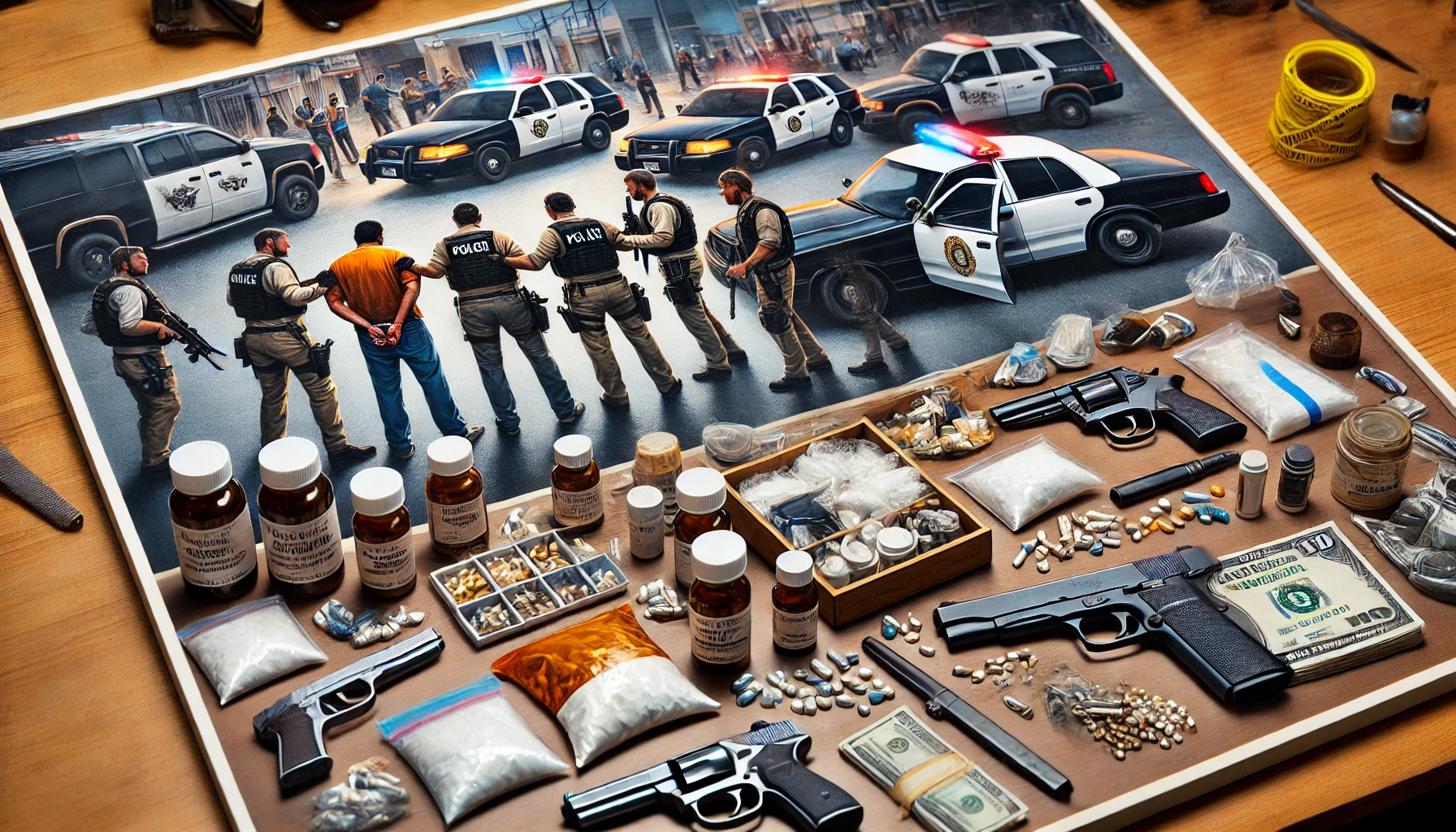Drug Trafficking Ring Busted in San Diego County
Drug Trafficking Ring Busted
San Diego County has long been a pivotal location in the ongoing battle against drug trafficking. Due to its strategic location along the U.S.-Mexico border, it has often been a hotspot for illicit activities. Recently, local authorities scored a significant victory, dismantling a large drug trafficking ring that had been operating in the region for years. This development marks a crucial step in curbing the flow of illegal substances into our communities and highlights the persistent efforts of law enforcement agencies.
The Operation: An Extensive and Coordinated Effort
The operation, which culminated in the arrest of multiple key figures in the drug trafficking network, was the result of an extensive investigation involving several law enforcement agencies, including the Drug Enforcement Administration (DEA), the San Diego County Sheriff’s Department, and the California Highway Patrol. The joint task force worked tirelessly, conducting surveillance, wiretaps, and undercover operations to gather enough evidence to take down the network.
“This operation was a testament to the dedication and collaboration of our law enforcement agencies,” said DEA Special Agent in Charge, John Callery. “By working together, we were able to disrupt a major drug trafficking organization that posed a significant threat to our community.”
Key Players and Their Roles
The ring was composed of several individuals, each playing a specific role in the operation. Here’s a breakdown of the key players and their roles:
- The Kingpin: At the top of the hierarchy was the kingpin, who orchestrated the entire operation. This individual was responsible for coordinating the importation of drugs from Mexico and overseeing their distribution throughout San Diego County.
- The Lieutenants: Below the kingpin were the lieutenants, who managed the day-to-day operations. They handled logistics, including the transportation and storage of drugs.
- The Couriers: These individuals were responsible for physically transporting the drugs from one location to another. They used various methods to avoid detection, including hidden compartments in vehicles and using unsuspecting individuals as mules.
- The Distributors: At the ground level, the distributors sold the drugs to street-level dealers and users. They operated in various neighborhoods, spreading the reach of the network.
The Impact on the Community
Drug trafficking has severe repercussions on communities, contributing to an increase in crime rates, addiction, and associated health issues. San Diego County has seen its share of these problems, with neighborhoods particularly hard hit by the presence of drugs and the violence that often accompanies their distribution.
By dismantling this trafficking ring, authorities have taken a significant step toward improving public safety and reducing the availability of dangerous substances on our streets. The bust is expected to lead to a decline in drug-related activities and provide a respite for communities that have suffered the brunt of the drug trade.
Combating Drug Trafficking in San Diego County
Drug trafficking in San Diego County has been a persistent issue due to its proximity to the U.S.-Mexico border. The recent bust of a major drug trafficking ring is a significant milestone in the ongoing efforts to combat this problem. San Diego law enforcement agencies continue to work diligently to intercept drug shipments and dismantle networks. Efforts like these are crucial in maintaining the safety and well-being of our communities. By reducing the availability of illicit drugs, authorities aim to decrease crime rates and improve public health outcomes.
The Legal Process: What Happens Next?
Following the arrests, the individuals involved will face the legal system. The charges against them include conspiracy to distribute controlled substances, possession with intent to distribute, and money laundering. If convicted, they could face substantial prison sentences and hefty fines.
The judicial process will involve several steps, starting with initial hearings where the charges will be formally presented. The defendants will have the opportunity to enter pleas, and if they plead not guilty, the cases will proceed to trial. The prosecution will present evidence gathered during the investigation, and defense attorneys will challenge this evidence, aiming to prove their clients’ innocence or negotiate plea deals.
Community Reactions and Support
The community’s reaction to the bust has been overwhelmingly positive. Residents expressed relief that a major source of drugs has been removed from their neighborhoods. Community leaders and organizations have also stepped up to provide support for those affected by the drug trade, offering counseling and rehabilitation services to help individuals overcome addiction.
“We are grateful to our law enforcement for their hard work and dedication,” said Maria Gonzalez, a local community activist. “This bust gives us hope that we can reclaim our streets and provide a safer environment for our children.”
The Ongoing Battle: Future Steps
While the bust represents a significant victory, the fight against drug trafficking is far from over. Authorities remain vigilant, knowing that other networks may attempt to fill the void left by the dismantled ring. Continuous efforts, including community outreach, education, and rehabilitation programs, are essential components of a comprehensive strategy to combat drug trafficking and its associated problems.
Conclusion
The recent drug trafficking ringbust in San Diego County underscores the importance of persistent and coordinated efforts in the fight against illegal drugs. By bringing down a major network, authorities have not only disrupted the flow of illicit substances but also sent a strong message to other traffickers. However, the battle is ongoing, and it requires the continued cooperation of law enforcement, community leaders, and residents to create a safer and healthier environment for all.
As we move forward, it is crucial to remain vigilant and support initiatives aimed at preventing drug trafficking and aiding those affected by it. Together, we can build a stronger, drug-free community.





